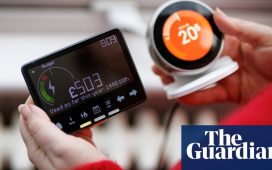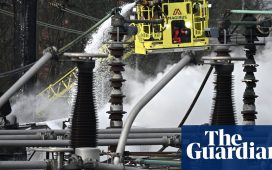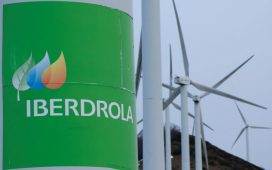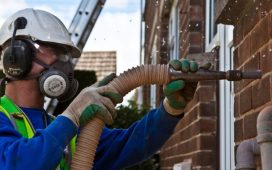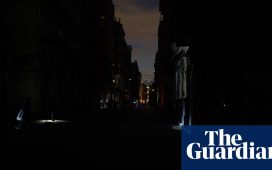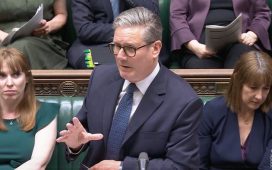Australia’s next wave of fossil fuel expansion is planned for environments far from where most people will ever see it. Places like Scott Reef.
Once part of an interconnected coral ecosystem that rivalled the Great Barrier Reef in scale, Scott Reef now sits in a remnant group of atolls near the edge of the Australian continental shelf, nearly 300km from its sparsely populated north-west coast.
Though little known by the public, the atolls are visually striking – from above, they look like a demented smiling facing spread over tens of kilometres – and ecologically extraordinary. Scientists have documented more than 1,500 species across its formations, many unique to the area. They include at least 300 reef-building corals, 720 types of fish, endangered turtles and sea snakes, and an array of migratory whales.
“If you think of your idea of a stereotypical coral reef paradise, that’s what it’s like,” says Dr Ben Fitzpatrick, a coral reef ecologist who has spent decades working in the country’s north-west marine environment.
“It’s been so isolated that a lot of the critters – fish, corals, invertebrates, giant clams, crustaceans and sea cucumbers – are quite genetically distinct. You get a lot of krill and a lot of big large marine animals – blue whales, manta rays, whale sharks. There’s an amazing turtle nesting rookery where turtles lay eggs on a sandy cay. They’re ancient, prehistoric animals that have been doing this for millions of years.”
That’s the story at the surface. But the ocean around Scott Reef is also prized for what lies beneath it: Australia’s largest untapped conventional gas basin. Woodside Energy, Australia’s biggest oil and gas producer, wants to drill into the Browse basin – particularly, its Torosa gas field, where wells are planned within 3km of the reef.
From Woodside’s perspective, the pay-off would be access to about 11.4m tonnes of gas a year, mostly destined to be shipped to energy-hungry markets in Asia. From 2030, it hopes to send gas via a 900km undersea pipeline from the Timor Sea to Karratha, an industrial town on Western Australia’s Indigenous-heritage rich Burrup Peninsula.
There, it would feed the North West Shelf liquified natural gas (LNG) processing plant. Built in the 1980s, the Karratha plant was expected to close in the 2030s, but Woodside has applied for a permit that could keep it running for another 50 years – decades beyond when the Australian government has committed to have net zero emissions.
Fitzpatrick, the director of the Perth-based consultancy Oceanwise, believes the local risks alone – from chemicals released during gas extraction, sediment churn, noise and light pollution, and what scientists working for Woodside estimated could be a 10cm subsidence of a sandy islet that turtles rely on for nesting – means the planned industrial development at Scott Reef is “bonkers”.
“It just should not be happening,” Fitzpatrick says of the Browse development. “I don’t know why we would even consider developing a gas field of this size, particularly in a location like that.
“The immediate risks to that environment are too great, there’s a long track record of accidents happening in that area and you’ve got that against a backdrop of climate change causing havoc on so many aspects of modern-day society. The cost is just too great.”
That cost is being weighed by officials working for both the Australian and Western Australian governments. The Browse development is one of about 30 proposed fossil fuel developments that have been submitted to the federal government for approval under national environment legislation.
Other plans are at earlier stages of development, but coming. Anthony Albanese’s Labor government this week announced it would award nine permits to companies including Esso, Woodside, Chevron and Inpex to begin exploration for new gas reserves off the country’s west and south-eastern coasts.
‘Signing away our future’
Data published by the Guardian this week showed the Australian proposals are part of a surge of new oil and gas exploration by wealthy democracies – including the US, UK and Canada – that threatens to unleash nearly 12bn tonnes of planet-heating emissions and undermine national and global climate commitments. The analysis by the International Institute for Sustainable Development (IISD) forecast the Australian government could issue 20 new licences this year, ultimately leading to 217m tonnes of additional carbon dioxide being pumped into the atmosphere.
The secretary general of the UN, António Guterres, said on Thursday that rich countries were “signing away our future” by leading a “flood” of expansion in fossil fuel activity that would trigger worsening heatwaves and other climate impacts that would affect billions of people.
The Australian government disputes the IISD figures, but analysts say this is just a fraction of what might lie ahead. Greenpeace, using data compiled by researchers at the Climate Analytics and Sunrise Project, has estimated that if all proposals before the Australian government are approved and fully exploited, it could produce up to 22bn tonnes of CO2 – equivalent to about 40% of annual global emissions, or 50 years’ worth of current Australian pollution.
The bulk of these emissions would be released far from Australian soil. Three-quarters of the gas extracted is sold overseas, mostly to customers in Japan, China and South Korea.
Does this make Australia a petrostate? Tim Buckley, a former investment banker, now director of the analysis firm Climate Energy Finance, is among those who believe it does.
He points to the documented history of Australia’s fossil fuel industry to pay, pressure and cajole governments to get its way. The result is that the country has continued to expand gas and coal operations, with no articulated end in sight, since it rejected a climate-laggard rightwing Coalition administration in 2022 and replaced it with a Labor government promising to take a leadership role on the climate crisis.
On the domestic front, the Albanese government has increased and legislated the country’s 2030 national emissions reduction target, introduced a policy to underwrite a substantial rollout of renewable energy and batteries, passed legislation to introduce vehicle emissions standards and promised $23bn to support a Future Made in Australia Act to develop a green industries.
But roadblocks to the rollout of clean technologies continue. The government recently released a “future gas strategy” that adopted pro-gas language used by the industry. It acknowledges gas use needs to fall, but offers nothing concrete to phase it down, and argues new sources will be needed to meet demand to “to 2050 and beyond”.
The strategy relies heavily on the widespread adoption of carbon capture and storage (CCS), a niche technology that has done little to cut global fossil fuel emissions despite billions of dollars in promised support.
Buckley says the policy reflects the influence of the petroleum industry’s lobbying power – he describes its representatives as “smart, well-paid people and they know how to spin a yarn to tell half-truths” – and the evidence that Australia is a petrostate is clear for anyone to see in federal and state budgets.
“The quick summary is that Australia has about A$220bn of fossil fuel exports, and in 2022-23 the companies that drive the industry made more than A$150bn. That’s an extraordinary gross profit of between 60% and 70%,” he says. “They paid little corporate tax and roughly A$25bn in federal and state royalties, and most of that was paid by the coal industry in Queensland. That tells you that fossil fuels call the shots nationally and in certain states – certainly Western Australia.”
Oil and gas interests hold sway
The Browse development is part of Woodside’s “Burrup Hub vision”, which analysts say in emissions terms – in Australia and overseas – could be the country’s biggest contribution to global heating. It includes the Scarborough gas field to Browse’s south-west and the expansion of the Pluto LNG plant, which neighbours the Karratha processing facility.
Greenpeace estimated the Burrup Hub could lead to 6.1bn tonnes of CO2. Woodside disputes this sum. It says the risks at Scott Reef can be managed, and that it is examining using CCS to limit local emissions.
The company’s plans are broadly backed by the Western Australian premier, Roger Cook, and the federal resources minister, Madeleine King. Cook has claimed a local increase in heat-trapping pollution was justified as it would lead to a “dramatic reduction” in global emissions as Australian gas displaced coal in Asia, but offered no evidence to back-up the claim.
Geoff Bice, a Western Australian-based Greenpeace campaigner, says the plan to develop Browse and the Burrup Hub is “troublesome on pretty much any metric you look at”. He argues it would deepen the global dependency on gas when the evidence is clear that the world should be heading in the opposite direction.
“It would delay the transition into renewables by further cementing fossil fuel infrastructure that’s going to require it’s own transition on top of what is already there,” he says. “It just makes sense that if there’s more gas in the system, it’s harder for new clean technology to get a foothold.”
This argument holds little sway in Western Australia, where Woodside is embedded in the state capital of Perth as a sponsor of sporting, cultural and educational institutions, and there has been what critics describe as a “revolving door” of people moving between jobs in political offices and the gas industry. Bill Hare, the WA-based head of the global non-profit organisation Climate Analytics, says decision-making in the state has been “captured” by oil and gas interests.
At a national level, there have been growing calls for a different approach. Diplomats for Climate, a group of more than 100 former bureaucrats, argues the Albanese government should do more to leverage its relationship with Japan – arguably the world’s most important energy partnership, given the Asian nation’s limited domestic energy options – to reduce its reliance on gas by encouraging it to plan to decarbonise more rapidly using Australian clean energy.
Not all types of coral have returned. Photograph: Wendy Mitchell/Greenpeace
The Institute for Energy Economics and Financial Analysis (Ieefa), a thinktank, has challenged the conventional wisdom that Japan needs Australian gas to keep the lights in Tokyo on. It demonstrated that Japanese demand for gas had fallen over the past decade, and says the country is now selling more LNG overseas than it buys from Australia.
Analysts acknowledge that a level of gas supply will be important to some countries during the clean transition, but Josh Runciman, Ieefa’s lead Australian gas analyst, says the extent to which it will be needed is often overstated. He points to data showing few large-volume gas import contracts have been signed, in part because it is increasingly an expensive fuel. “There are real questions as to whether optimistic industry forecasts will be realised,” he says.
The Australian government tends to respond to these issues by suggesting they are a question for industry, not government. It says it is dealing with fossil fuel emissions by toughening “safeguard mechanism” legislation so about 200 major industrial sites have to either reduce their direct pollution year-on-year or pay for contentious carbon offsets.
But it rejects calls for it to ban new fossil fuel developments – as things stand, a project’s emissions footprint is not grounds to block it under national environment law – and its policies do not apply to the bulk of the emissions that result from Australian LNG when the gas is burned overseas. They are considered someone else’s responsibility, consistent with international carbon accounting rules.
A problem with this logic is that places like Scott Reef don’t know the difference.
Fitzpatrick points out Scott Reef has suffered through a mass coral bleaching event before, during the first global bleaching event in 1998. It lost more than 80% of coral cover and took about 12 years to recover, but not all types of coral came back.
“I don’t know why you’d want to plonk industry on top of a reef if you can choose not to, but the biggest danger is the scope-3 [overseas] emissions,” he says. “It is an not impossible scenario that we could see the death of those sort of reefs by 2050. That’s the choice we’re making.”

